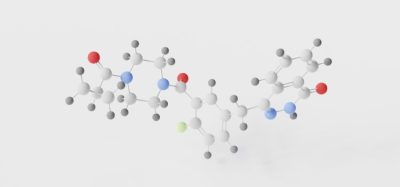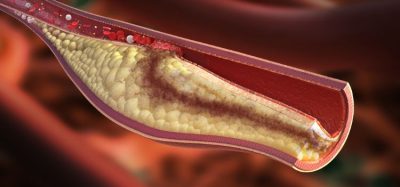Bristol-Myers Squibb reports fourth quarter and full year 2014 financial results
Posted: 28 January 2015 | Bristol-Myers Squibb
Bristol-Myers Squibb Company (NYSE:BMY) today reported results for the fourth quarter and full year of 2014, which were highlighted by strong global sales for priority brands and important advances in the company’s immuno-oncology (I-O) portfolio.
The company received accelerated regulatory approval of Opdivo in the U.S., presented encouraging clinical data for Opdivo across several tumor types from its broad clinical program, and announced positive results that led to the early stop of Opdivo’s Phase 3 trial in squamous cell non-small cell lung cancer (NSCLC). In addition, the company presented important clinical data for Eliquis and daclatasvir and provided financial guidance for 2015.
“We had an excellent fourth quarter to close a strong year financially and operationally, and made significant progress in our I-O pipeline with the approval of Opdivo in the U.S. for patients with advanced melanoma,” said Lamberto Andreotti, chief executive officer, Bristol-Myers Squibb. “Our performance in 2014 across brands and geographies, continued innovation and productivity in R&D and investments in business development opportunities reflect the strength and execution of our BioPharma strategy, and positions us well for 2015,” Andreotti said.
| Fourth Quarter | |||||||||
| $ amounts in millions, except per share amounts | |||||||||
| 2014 | 2013 | Change | |||||||
| Total Revenues | $4,258 | $4,441 | (4)% | ||||||
| GAAP Diluted EPS | 0.01 | 0.44 | (98)% | ||||||
| Non-GAAP Diluted EPS | 0.46 | 0.51 | (10)% | ||||||
| Full Year | |||||||||
| $ amounts in millions, except per share amounts | |||||||||
| 2014 | 2013 | Change | |||||||
| Total Revenues | $15,879 | $16,385 | (3)% | ||||||
| GAAP Diluted EPS | 1.20 | 1.54 | (22)% | ||||||
| Non-GAAP Diluted EPS | 1.85 | 1.82 | 2% | ||||||
FOURTH QUARTER FINANCIAL RESULTS
- Bristol-Myers Squibb posted fourth quarter 2014 revenues of $4.3 billion, a decrease of 4% compared to the same period a year ago. Excluding the divested Diabetes Alliance, global revenues increased 6% or 9% adjusted for foreign exchange impact.
- U.S. revenues decreased 8% to $2.1 billion in the quarter compared to the same period a year ago. International revenues were flat.
- Gross margin as a percentage of revenues was 77.3% in the quarter compared to 71.3% in the same period a year ago. The increase is primarily attributable to the diabetes divestiture.
- Marketing, selling and administrative expenses increased 8% to $1.2 billion in the quarter.
- Advertising and product promotion spending decreased 16% to $213 million in the quarter.
- Research and development expenses increased 24% to $1.2 billion in the quarter, primarily due to timing.
- The effective tax rate was 145% in the quarter, compared to 15.4% in the fourth quarter last year. Income taxes in the current quarter include net tax benefits attributed to specified items and the R&D credit for the full year 2014.
- The company reported net earnings attributable to Bristol-Myers Squibb of $13 million, or $0.01 per share, in the quarter compared to $726 million, or $0.44 per share, a year ago. The results in the quarter include an after-tax $0.28 per share impact of a non-cash charge resulting from the transfer of $1.5 billion of U.S. pension obligations to Prudential.
- The company reported non-GAAP net earnings attributable to Bristol-Myers Squibb of $771 million, or $0.46 per share, in the fourth quarter, compared to $842 million, or $0.51 per share, for the same period in 2013. An overview of specified items, including the pension-related charge mentioned above, is discussed under the “Use of Non-GAAP Financial Information” section.
- Cash, cash equivalents and marketable securities were $11.8 billion, with a net cash position of $4.0 billion, as of December 31, 2014.
FOURTH QUARTER PRODUCT AND PIPELINE UPDATE
Bristol-Myers Squibb’s global sales in the fourth quarter included Eliquis, which grew by $210 million, Yervoy, which grew 41%, Orencia, which grew 12%, Sprycel, which grew 9%, and Daklinza and Sunvepra, which had combined sales of $207 million.
Opdivo
- In January, the company announced that an open-label, randomized Phase 3 study evaluating Opdivo, a human programmed death receptor-1 (PD-1) blocking antibody, versus docetaxel in previously treated patients with advanced, squamous cell NSCLC was stopped early because an assessment conducted by the independent Data Monitoring Committee concluded that the study met its endpoint, demonstrating superior overall survival in patients receiving Opdivo compared to the control arm. The company will share these data – which for the first time indicate a survival advantage with an anti-PD-1 immune checkpoint inhibitor in lung cancer – with health authorities.
- In December, the U.S. Food and Drug Administration (FDA) approved Opdivo injection for intravenous use. Opdivo is indicated for the treatment of patients with unresectable or metastatic melanoma and disease progression following Yervoy and, if BRAF V600 mutation positive, a BRAF inhibitor. Opdivo received accelerated approval for this indication based on tumor response rate and durability of response. Continued approval for this indication may be contingent upon verification and description of clinical benefit in the confirmatory trials.
- In December, at the American Society for Hematology (ASH) annual meeting in San Francisco, the company announced positive results from a cohort of patients in CheckMate -039, its ongoing Phase 1b trial evaluating Opdivo in patients with relapsed or refractory hematological malignancies (n=23). Results showed high levels of response in patients with relapsed or refractory classical Hodgkin lymphoma, with an overall response rate of 87% (n=20) and stable disease in 13% (n=3). The findings were published in The New England Journal of Medicine (NEJM).
- In November, at the Society for Melanoma Research international congress in Zurich, Switzerland, the company announced results from CheckMate -066, a Phase 3 randomized, double-blind study, comparing Opdivo to the chemotherapy dacarbazine in patients with treatment-naïve BRAF wild-type advanced melanoma (n=418). The study met the primary endpoint of overall survival with the median overall survival not reached for Opdivo vs. 10.8 months for dacarbazine. The one-year survival rate was 73% for Opdivo vs. 42% for dacarbazine and there was a 58% decrease in the risk of death for patients treated with Opdivo (hazard ratio for death: 0.42, P<0.0001). This survival advantage was also observed in Opdivo-treated patients who are positive or negative for programmed death ligand-1 (PD-L1). The findings were published in NEJM.
- In October, at the Chicago Multidisciplinary Symposium on Thoracic Oncology, the company announced results from CheckMate -063, a Phase 2 single-arm, open-label study of Opdivo administered as a single agent in patients with advanced squamous cell NSCLC who have progressed after at least two prior systemic treatments. Sixty-five percent of patients studied (n=117) received three or more prior therapies. With approximately 11 months of minimum follow-up, the objective response rate – the study’s primary endpoint – was 15% (95% CI = 8.7, 22.2) as assessed by an independent review committee using RECIST 1.1 criteria and the median duration of response was not reached. The estimated one-year survival rate was 41% (95% CI = 31.6, 49.7) and median overall survival was 8.2 months (95% CI = 6.05, 10.91).
Eliquis
- In December, at the ASH meeting in San Francisco, the company and its partner, Pfizer, announced results of the first human study evaluating the reversal of the anticoagulant effect of Eliquis by 4-factor prothrombin complex concentrates in healthy subjects. The study results demonstrated that both Sanquin’s Cofact, a heparin-free formulation, and CSL Behring’s Beriplex® P/N, a formulation containing heparin, reversed the steady-state pharmacodynamic effects of Eliquis.
- In November, the company and its partner, Pfizer, along with Portola Pharmaceuticals announced results from the first part of the Phase 3 ANNEXA™-A studies for Andexanet alfa, Portola’s investigational anti-Factor Xa agent to reverse the anticoagulant effect of Eliquis. Andexanet alfa produced rapid and nearly complete reversal (approximately 94%, P<0.0001) of the anticoagulant effect of Eliquis in healthy volunteers ages 50-75. The data were presented at the American Heart Association Scientific Sessions in Chicago.
Daclatasvir
- In November, the FDA issued a Complete Response Letter regarding the New Drug Application (NDA) for daclatasvir, an NS5A complex inhibitor, in combination with other agents for the treatment of hepatitis C (HCV). The initial daclatasvir NDA focused on its use in combination with asunaprevir, an NS3/4A protease inhibitor. Given the withdrawal of asunaprevir in the U.S. by Bristol-Myers Squibb in October, the FDA is requesting additional data about daclatasvir in combination with other antiviral agents for the treatment of HCV. Daclatasvir is marketed as Daklinza in Japan and the European Union.
- In November, the company announced results from the landmark ALLY trial investigating a ribavirin-free 12-week regimen of daclatasvir in combination with sofosbuvir in genotype 3 HCV patients, a patient population that has emerged as one of the most difficult to treat. The data, which showed sustained virologic response 12 weeks after treatment (SVR12) in 90% of treatment-naïve and 86% of treatment-experienced patients, were presented at the annual meeting of the American Association for the Study of Liver Diseases (AASLD) in Boston.
- In November, also at AASLD, the company announced data from the UNITY trial program investigating a 12-week regimen of its all-oral daclatasvir-based TRIO regimen – a fixed-dose combination of daclatasvir with asunaprevir and beclabuvir – in a broad range of patients with genotype 1 HCV. In the UNITY-2 study, which evaluated cirrhotic patients, 98% of treatment-naïve and 93% of treatment-experienced cirrhotic patients receiving TRIO with ribavirin achieved SVR12 and 93% of treatment-naïve and 87% of treatment-experienced cirrhotic patients receiving TRIO without ribavirin achieved SVR12. In the open-label UNITY-1 study, which evaluated the TRIO regimen without ribavirin in treatment-naïve and treatment-experienced non-cirrhotic patients for 12 weeks with 24 weeks of follow-up, 91% of patients achieved SVR12 and 92% of treatment-naive patients and 89% of treatment-experienced patients achieved cure without the use of ribavirin.
Orencia
- In November, at the American College of Rheumatology annual meeting in Boston, the company announced results from several new sub-analyses of the Phase 3b AVERT trial investigating the use of Orencia plus methotrexate (MTX) in biologic and methotrexate-naïve citrullinated protein (CCP)-positive early moderate to severe rheumatoid arthritis (RA) patients. The subanalyses showed that first-line treatment with Orencia plus MTX resulted in patients with early RA achieving significantly higher rates of stringent measures of remission; reduced the development of anti-CCP antibodies, an indicator of more severe, persistent, and erosive disease in patients with early rapidly progressing RA; improved synovitis and osteitis scores at 12 months; and improved joint erosion scores at both 12 and 18 months, compared to MTX alone.
FOURTH QUARTER BUSINESS DEVELOPMENT UPDATE
- In January, the company announced a clinical trial collaboration agreement with Seattle Genetics to evaluate the investigational combination of Opdivo with Seattle Genetics’ antibody drug conjugate Adcetris® (brentuximab vedotin) in two planned Phase 1/2 clinical trials. The first trial will evaluate the combination of Opdivo and Adcetris® as a potential treatment option for patients with relapsed or refractory Hodgkin lymphoma, and the second trial will focus on patients with relapsed or refractory B-cell and T-cell non-Hodgkin lymphomas, including diffuse large B-cell lymphoma.
- In January, the company announced a clinical trial collaboration with Lilly to evaluate the safety, tolerability and preliminary efficacy of Opdivo in combination with Lilly’s galunisertib (LY2157299), a TGF beta R1 kinase inhibitor. The Phase 1/2 trial will evaluate the investigational combination of Opdivo and galunisertib as a potential treatment option for patients with advanced (metastatic and/or unresectable) glioblastoma, hepatocellular carcinoma and NSCLC.
- In January, the company announced a worldwide research collaboration with the California Institute for Biomedical Research (Calibr) to develop novel small molecule anti-fibrotic therapies, and an exclusive license agreement that allows Bristol-Myers Squibb to develop, manufacture and commercialize Calibr’s preclinical compounds resulting from the collaboration.
- In December, the company and its partner, Ono Pharmaceutical Co., Ltd., along with Kyowa Hakko Kirin Co., Ltd., announced a clinical trial collaboration agreement to conduct a Phase 1 combination study of Opdivo and mogamulizumab, an anti-CCR4 antibody. The study, which will be conducted in Japan, will focus on evaluating the safety, tolerability and anti-tumor activity of combining Opdivo and mogamulizumab as a potential treatment option for patients with advanced or metastatic solid tumors.
- In November, the company and Five Prime Therapeutics, Inc., announced that they have entered into an exclusive clinical collaboration agreement to evaluate the safety, tolerability and preliminary efficacy of combining Opdivo with FPA008, Five Prime’s monoclonal antibody that inhibits the colony stimulating factor-1 receptor. The Phase 1a/1b study will evaluate the combination of Opdivo and FPA008 as a potential treatment option for patients with NSCLC, melanoma, head and neck cancer, pancreatic cancer, colorectal cancer and malignant glioma.
- In November, the company announced plans to construct a state-of-the-art, large-scale biologics manufacturing facility in Cruiserath, County Dublin, Ireland. The facility will produce multiple therapies for the company’s growing biologics portfolio and significantly increase Bristol-Myers Squibb’s biologics manufacturing capacity.
- In November, the company and Galecto Biotech AB announced that the companies, together with Galecto’s shareholders, have entered into an agreement that provides Bristol-Myers Squibb the exclusive option to acquire Galecto Biotech AB and gain worldwide rights to its lead asset TD139, a novel inhaled inhibitor of galectin-3 in Phase 1 development for the treatment of idiopathic pulmonary fibrosis and other pulmonary fibrotic conditions.
- In October, the company and Lonza announced a multi-year expansion of their existing biologics manufacturing agreement. Lonza will produce commercial quantities of a second Bristol-Myers Squibb biologic medicine at its mammalian manufacturing facility in Portsmouth, New Hampshire.
- In October, the company and F-star Alpha Ltd. announced that the companies, together with F-star Alpha’s shareholders, have entered into an agreement that provides Bristol-Myers Squibb the exclusive option to acquire F-star Alpha, and gain worldwide rights to its lead asset, FS102. FS102 is a novel, Phase 1-ready human epidermal growth factor receptor 2 (HER2)-targeted therapy in development for the treatment of breast and gastric cancer among a well-defined population of HER2-positive patients who do not respond or become resistant to current therapies.
Adcetris® is a registered trademark of Seattle Genetics, Inc.
ANNEXA™ is a trademark of Portola Pharmaceuticals, Inc.
Beriplex® P/N is a trademark of CSL Behring GmbH
2015 FINANCIAL GUIDANCE
Bristol-Myers Squibb is setting its 2015 GAAP and non-GAAP EPS guidance range at $1.55 – $1.70. Both GAAP and non-GAAP guidance assume current exchange rates. Key 2015 non-GAAP guidance assumptions include:
- Worldwide revenues between $14.4 billion and $15.0 billion.
- Full-year gross margin as a percentage of revenues of approximately 74%.
- Advertising and promotion expense decreasing in the mid- to high-teen-digit range.
- Marketing, sales and administrative expenses decreasing in the mid- to high-single-digit range.
- Research and development expenses decreasing in the low-single-digit range.
- An effective tax rate of approximately 19%.
The financial guidance for 2015 excludes the impact of any potential future strategic acquisitions and divestitures, and any specified items that have not yet been identified and quantified. The non-GAAP 2015 guidance also excludes other specified items as discussed under “Use of Non-GAAP Financial Information.” Details reconciling adjusted non-GAAP amounts with the amounts reflecting specified items are provided in supplemental materials available on the company’s website.
Use of Non-GAAP Financial Information
This press release contains non-GAAP financial measures, including non-GAAP earnings and related earnings per share information. These measures are adjusted to exclude certain costs, expenses, significant gains and losses and other specified items. Among the items in GAAP measures but excluded for purposes of determining adjusted earnings and other adjusted measures are: restructuring and other exit costs; accelerated depreciation charges; IPRD and asset impairments; charges and recoveries relating to significant legal proceedings; upfront, milestone and other payments for in-licensing of products that have not achieved regulatory approval which are immediately expensed; net amortization of acquired intangible assets and deferred income related to Amylin; pension settlement charges; significant tax events and additional charges related to the Branded Prescription Drug Fee. This information is intended to enhance an investor’s overall understanding of the company’s past financial performance and prospects for the future. Non-GAAP financial measures provide the company and its investors with an indication of the company’s baseline performance before items that are considered by the company not to be reflective of the company’s ongoing results. The company uses non-GAAP gross profit, non-GAAP marketing, selling and administrative expense, non-GAAP research and development expense, and non-GAAP other income and expense measures to set internal budgets, manage costs, allocate resources, and plan and forecast future periods. Non-GAAP effective tax rate measures are primarily used to plan and forecast future periods. Non-GAAP earnings and earnings per share measures are primary indicators the company uses as a basis for evaluating company performance, setting incentive compensation targets, and planning and forecasting of future periods. This information is not intended to be considered in isolation or as a substitute for financial measures prepared in accordance with GAAP.









